Here’s What Really Happened on the Set of The Wizard of Oz
The 1939 musical fantasy film The Wizard of Oz is considered to be one of the most iconic films of all time. The Metro-Goldwyn-Mayer classic about a young girl from Kansas who gets taken to a magical land by a tornado left a lasting impact on audiences worldwide, and helped propel a then-unknown Judy Garland to stardom. The Wizard of Oz may not have been the first full-length Technicolor film, but it was without a doubt one of the most beautiful Technicolor movies ever made.
However, it wasn’t all rainbows and butterflies behind the scenes. Despite its heartwarming material, The Wizard of Oz was a nightmare for many people who worked on the set. From the horrible mistreatment of actors to substance abuse issues and even life-threatening injuries, here’s an inside look at what went on behind the scenes that will forever change your perspective on this film.
1. Judy Garland Was Made To Wear a Painful Corset
Unbeknownst to many Wizard of Oz fans, the studio execs forced a then-16-year-old Judy Garland to lose weight so she could look as young as possible for the film. However, that was not the only thing the young actress was forced to do.

Source: the_original_em/Pinterest
Since Garland played the role of a prepubescent girl, studio execs made her wear a super tight corset around her torso to flatten her chest and make her appear more childlike. We can only imagine how painful the corset must have been, and how difficult it must have been for her to breathe!
2. “Over the Rainbow” Was Nearly Cut From the Film
The song “Over the Rainbow” from The Wizard of Oz is an icon in its own right. However, did you know that this award-winning song was nearly cut from the film? The Wizard of Oz had a run-time of about two hours, and the producers wanted to cut the film down by at least 20 minutes for it to be a more reasonable length.
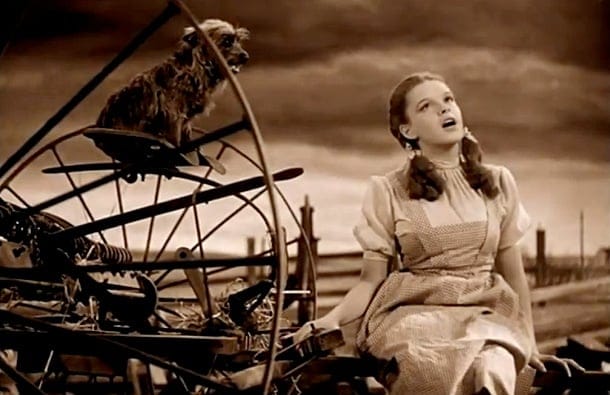
Source: MGM
The producers also thought that younger viewers might not understand the song’s message. One exec also pointed out that the song was too depressing. However, instead of cutting the version that Dorothy sang in Kansas, what was axed instead was the reprise that Dorothy sang in the Wicked Witch’s lair.
3. The Original Director Had Different Ideas in Mind for the Film
Richard Thorpe, the film’s original director, had different ideas in mind for how the film should look. He wanted Dorothy to more closely resemble the original drawings in John R. Neil’s book, with chic, blonde hair and baby-doll makeup.
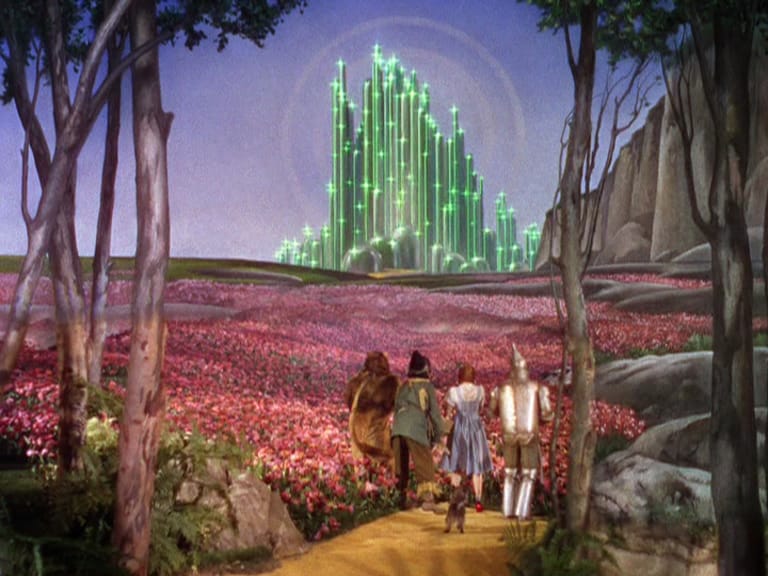
Source: MGM
Thorpe also had a different actress in mind to play the role of Dorothy. He hoped that the studio could get Shirley Temple to be in the film, but this did not happen. Thorpe also gave the role of the Tin Man to Buddy Ebsen, who would later be forced to pass on the role to Jack Haley due to health reasons. Thorpe was fired by the studio after just two weeks.
4. Judy Garland was Slapped in the Face by Victor Fleming
Yes, you read that right – 16-year-old Judy Garland was slapped in the face by 49-year-old director, Victor Fleming. It happened while filming the famous scene where Dorothy slaps the Cowardly Lion. At the time, Fleming had just assumed directorial responsibility after George Cukor left to work on Gone With the Wind.
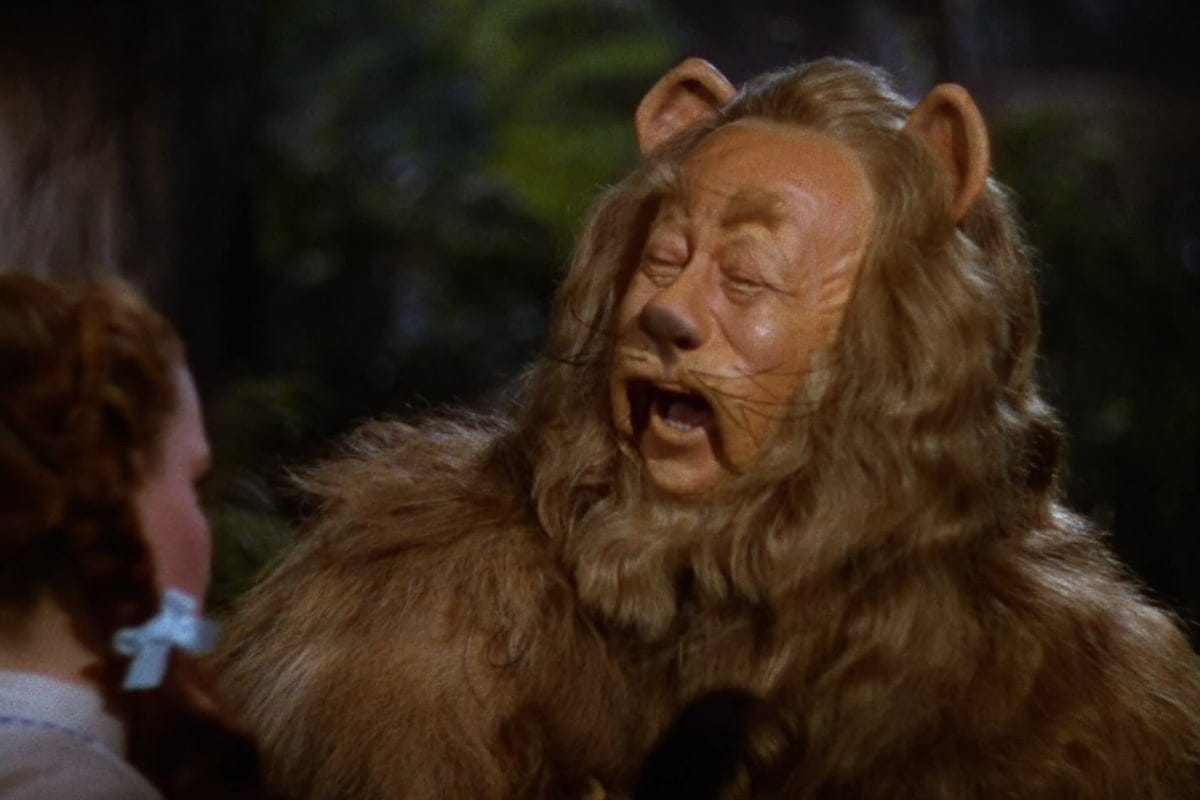
Source: MGM
Garland reportedly couldn’t stop giggling while filming the scene. After several ruined takes, Fleming pulled Garland aside, slapped her across the face, and told her to get back to work. Ouch!
5. Playing the Tin Man Wasn’t Easy
Playing the Tin Man came with certain risks. Buddy Ebsen suffered an allergic reaction to the aluminum powder that he had to wear, forcing him to leave the project. Even though the film’s makeup artists did switch from aluminum powder to aluminum paint eventually, this didn’t stop Jack Haley from getting an eye infection when it was his turn to play the role.
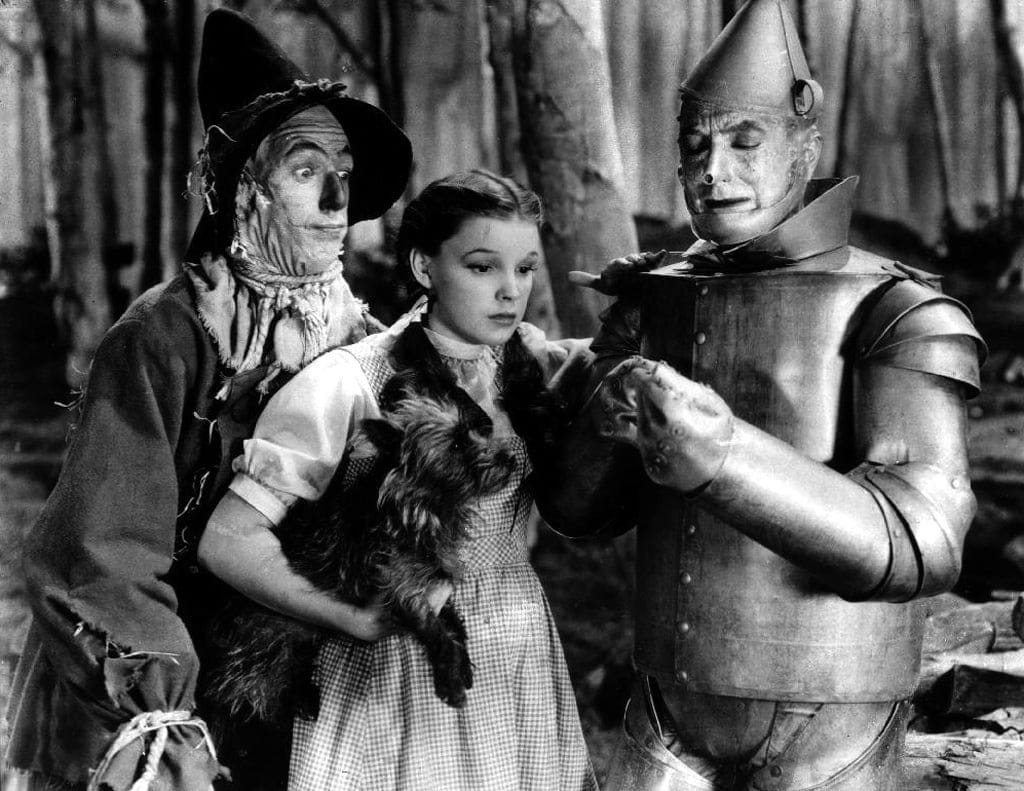
Source: MGM
As if that wasn’t bad enough, the Tin Man’s costume was also incredibly stiff, which made it difficult for Haley to sit down. He also needed the help of other people just to get up. This forced Haley to remain standing while wearing his costume. If Haley wanted relief, he had no choice but to lean against something instead.
6. One of the Pairs of Ruby Slippers Was Stolen
In 2005, one of the several pairs of ruby slippers worn by Judy Garland on set was stolen from the Judy Garland Museum in Grand Rapids, Minnesota. It would take another 13 years before authorities recovered the said slippers. However, no one was arrested or charged in connection to the case.
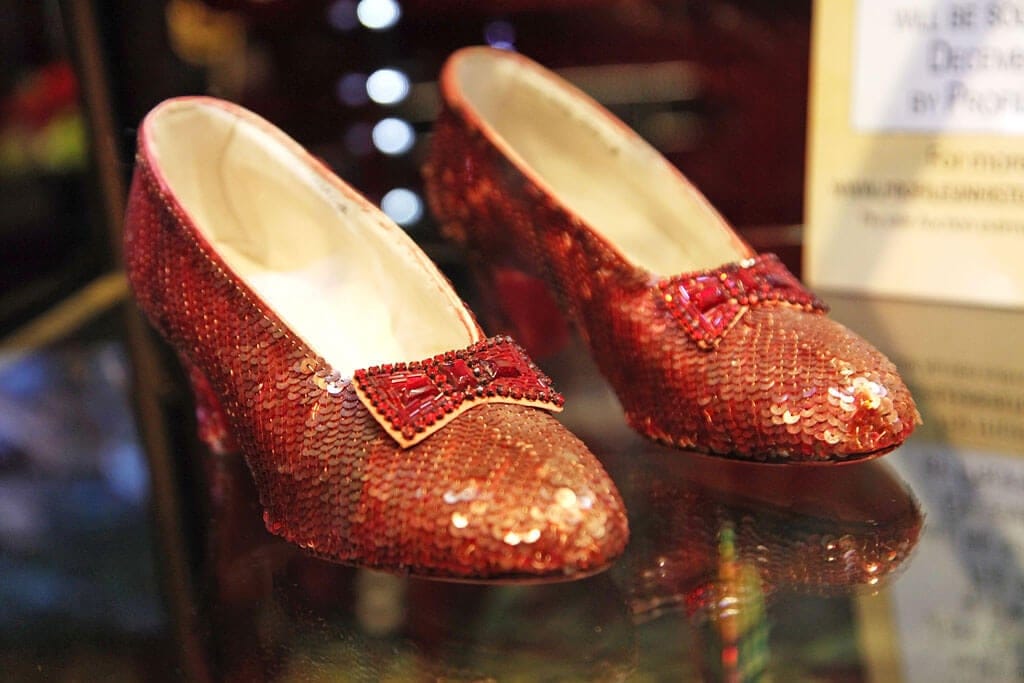
Source: Brian To/FilmMagic
The film’s costume designers created a total of seven pairs of ruby slippers for Judy Garland to wear. Some of these pairs are on display at the Academy of Motion Pictures and Arts Sciences Museum, the National Museum of American History, and Oz Park in Chicago. The remaining pairs are in the hands of private collectors.
7. The Cowardly Lion’s Costume Was Made From Real Lion Fur
The Cowardly Lion’s costume looks epic and fairly detailed, don’t you think? That’s no accident – the character’s costume is partially made from the fur of real lions! While CGI or more advanced prosthetics would likely be used these days, these weren’t exactly available in the 1930s.
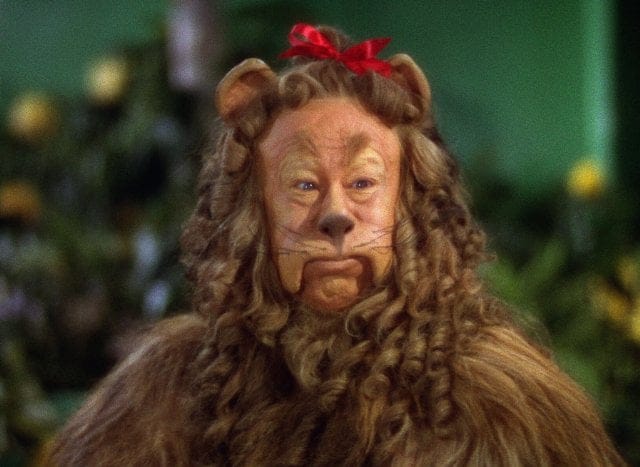
Source: MGM
The costume weighed a whopping 90 pounds and lacked proper ventilation, which made it extremely uncomfortable to wear. Bert Lahr – the actor who played the Cowardly Lion – would reportedly sweat so much that his costume needed to be placed in an industrial drying bin overnight after every use.
8. The Munchkins Were Paid Less Than Toto
Toto, Dorothy’s beloved dog, was played by Terry, a female Cairn Terrier. Terry herself was no stranger to Hollywood, having appeared in several movies before The Wizard of Oz, including Bright Eyes which starred Shirley Temple. Terry reportedly got paid $125 a week for her role as Toto.
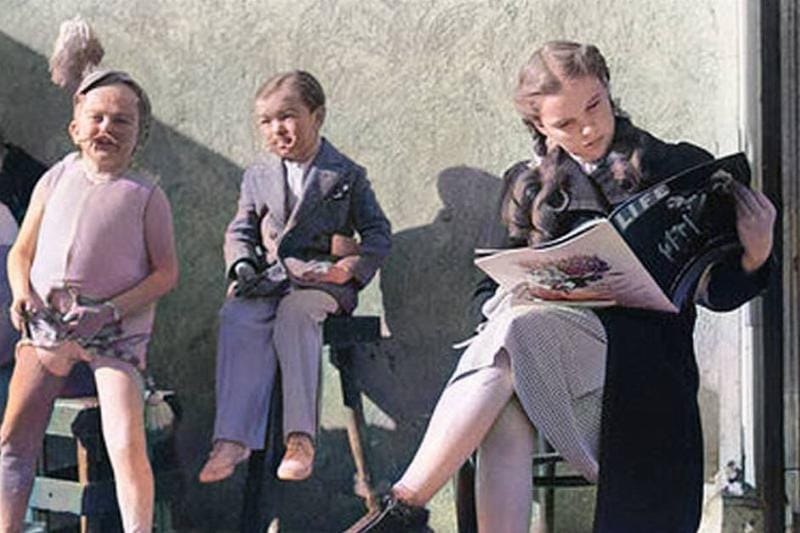
Source: Pinterest
In comparison, the human actors who played the Munchkins only got paid between $50 – $100 a week. This wasn’t a small chunk of change at the time, but it’s certainly not what you would expect for movie stars!
9. The Wicked Witch of the West Was Supposed To Look Completely Different
In The Wizard of Oz, the Wicked Witch of West is portrayed as a ghastly, terrifying, bright green character with an awful personality – unless of course, you’re a fan of the hit Broadway musical Wicked and see the character in a more sympathetic light. However, the Wicked Witch of the West wasn’t always terrifying and horrible-looking. She was, in fact, originally supposed to be beautiful and sexy.

Source: MGM
The character’s look was eventually changed by the producers to contrast more with the Good Witch. Gale Sondergaard, the actress who was originally cast to play the Wicked Witch, didn’t like the new look of the character and bailed. Margaret Hamilton took over the role instead.
10. Judy Garland Was Drugged While Filming
Aside from being forced to wear tight corsets and being put on a strict diet, Judy Garland was drugged to help her get through filming. She was prescribed medication to help her lose weight (gross, we know), and a different prescription to help her sleep. As shocking as it may seem, it wasn’t unusual for child actors to be given prescriptions in the 1930s.

Metro-Goldwyn-Mayer
Sadly, this experience would affect Garland for the rest of her life. Throughout her adulthood, Garland would be plagued with alcohol and substance abuse issues. Garland passed away in her rented London apartment in 1969 from an accidental overdose. She was 47.
11. Margaret Hamilton’s Screen Time Was Cut Because Her Character Was “Too Scary”
Margaret Hamilton was brilliant in her role as the Wicked Witch of the West, and many of the cast and crew certainly thought so, too. However, considering that The Wizard of Oz was supposed to be a light-hearted story about family, studio execs worried that the character would be too scary for children.

Source: MGM
As a result, the studio cut Hamilton’s screen time down to just a few bits so as not to ruin younger audiences’ viewing experience. However, these screen cuts didn’t make Hamilton’s character any less important, and Hamilton was widely praised by critics for her performance.
12. Margaret Hamilton Was Badly Injured While Filming
Not only was Margaret Hamilton’s screen time cut, but she was also badly injured on set that she had to take six weeks off. Hamilton’s injury happened while filming the scene where the Wicked Witch of the West leaves Munchkinland in a flash of smoke and fire.

Source: MGM
Hamilton was supposed to drop down safely into a trap door before the flames appeared. However, the door malfunctioned and didn’t open fast enough. This left Hamilton with second and third-degree burns all over her face and hands that took weeks to heal.
13. Judy Garland Wasn’t Supposed To Play Dorothy
It’s no secret that the actor playing the lead role in a movie isn’t necessarily the directors’, producers’, and studios’ first choice. This was certainly the case for The Wizard of Oz – studio execs wanted Shirley Temple to play Dorothy as she was a bigger star and was of a more suitable age.
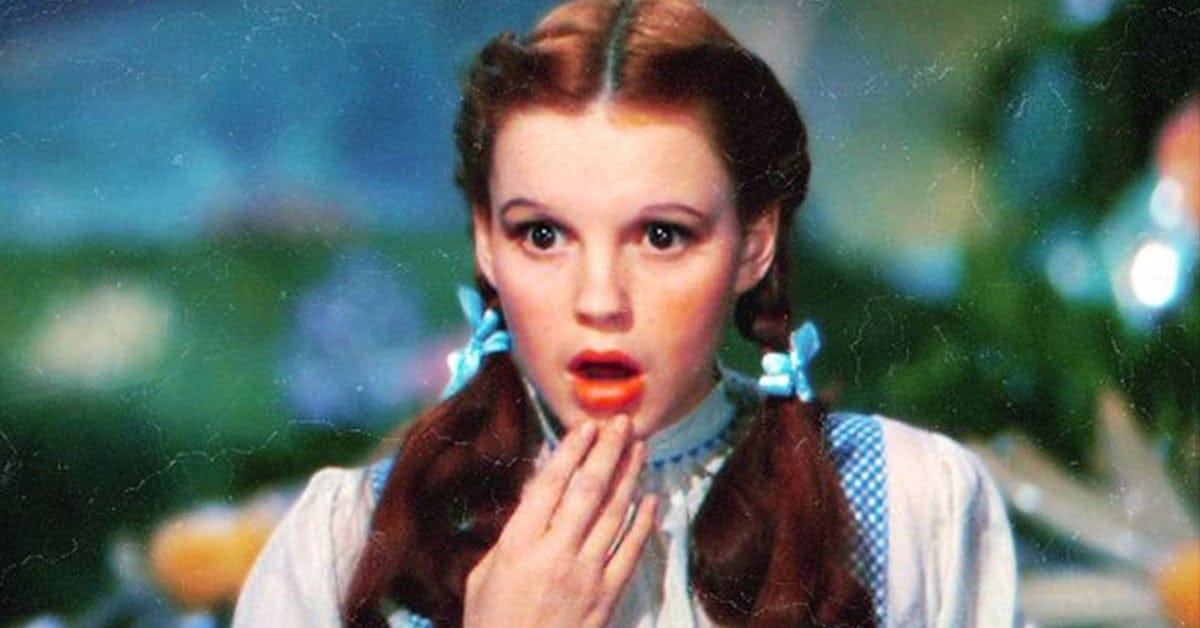
Source: MGM
However, producers worried that Temple’s singing voice wasn’t good enough for the part. Temple was also contracted to 20th Century Fox at the time, and not MGM. MGM tried to trade Jean Harlow and Clark Gable for Temple, but these plans fell through after Harlow’s untimely death.
14. There Are Some Key Differences Between the Book and the Movie
Whenever a novel gets a film adaptation, some changes are to be expected. However, many fans of the novel didn’t expect The Wizard of Oz to deviate so drastically from the book. In the book, for instance, Glinda is the Good Witch of the South, not the North. Oz is a real place too, and not just a dream like it was in the movie.
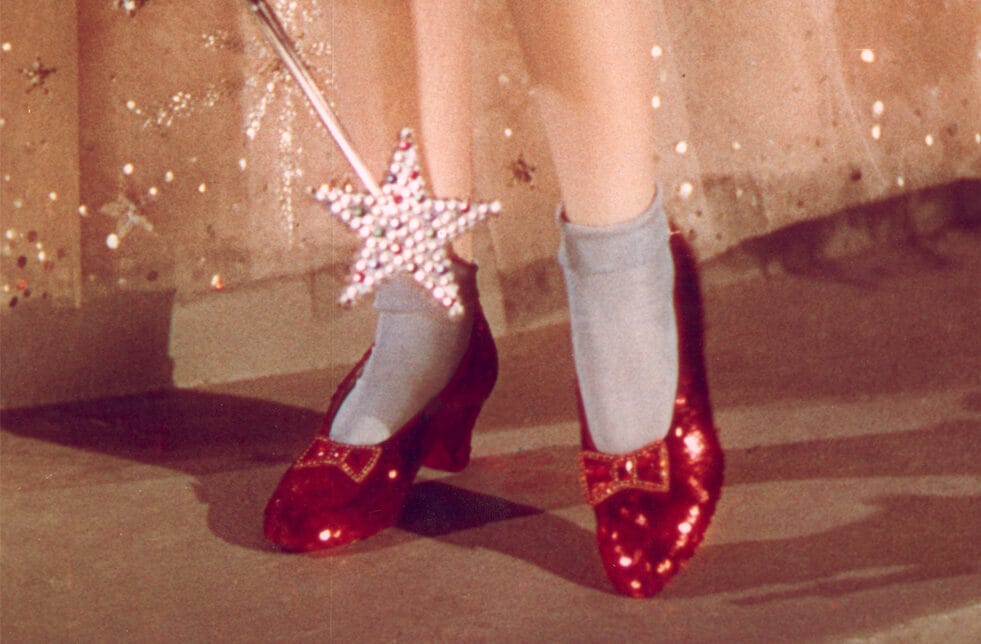
Source: MGM
In the book, Dorothy had silver slippers, not ruby. Louis B. Mayer, the studio head, wanted to change the color to something brighter to test MGM’s new Technicolor technology. The studio also changed the color of Dorothy’s shirt to light pink because white was trickier to shoot in color.
15. The Scarecrow, Cowardly Lion, and Tin Man Were Outcasts
Ray Bolger, Bert Lahr, and Jack Haley – the Scarecrow, Cowardly Lion, and Tin Man, respectively – play important characters in the film, but they weren’t treated that way behind the scenes, particularly while they were in costume.

Source: MGM
The movie was filmed in the 1930s when slasher films, CGI, and other more advanced special effects didn’t exist. The three actors’ costumes were considered so terrifying that they were banned from the MGM lunchroom to avoid scaring the MGM staff. How awful!
16. The Wonderful Wizard of Oz Was a Feminist Children’s Book
In the Wizard of Oz, Dorothy is very much a damsel in distress. She would get into all sorts of trouble and seemed in over her head most of the time. This isn’t the case, however, in L. Frank Baum’s novel The Wonderful Wizard of Oz. Dorothy is portrayed as a strong character who didn’t need others to swoop in and save her.

Source: MGM
In the novel, Dorothy does most of the saving. She also seemed to fit right in at Oz, which had a positive effect on the way she interacted with those around her. According to L. Frank Baum, he wanted Dorothy to be a strong role model for young female audiences.
17. The Wizard of Oz Had Many Inconsistencies
Filming in Technicolor is a complicated process. It also requires a massive amount of lighting. The lighting on the set was so bright that it can be seen reflected in various shiny surfaces like in glass or Dorothy’s ruby slippers.

Source: MGM
There were also many other inconsistencies or mistakes throughout the film. The length of Dorothy’s hair was inconsistent, while some props seemed to disappear out of thin air or change, like in one scene where the Tin Man’s spear turns into an ax.
18. Dorothy’s Signature Look Was George Cukor’s Idea
George Cukor was hired as the film’s temporary director after Richard Thorpe was fired. Cukor never really intended to stay throughout the whole movie as he was hoping to land a job as the director of Gone with the Wind. However, that job ended up going to Victor Fleming, who would also become the director of The Wizard of Oz later on.
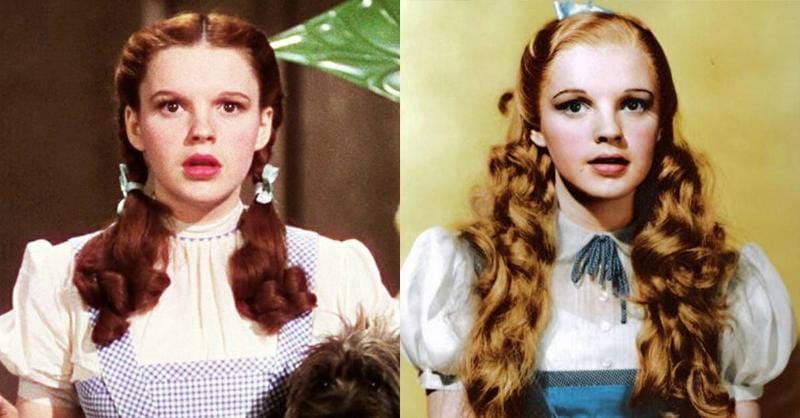
Source: davenhar2306/Pinterest
During George Cukor’s time on set, he gave Dorothy her signature look, ditching the blonde wig in favor of a more natural look that would better contrast Oz’s fantastical nature. We think this was a great choice!
19. The Wizard’s Coat Was Owned by L. Frank Baum in Real Life
Sometimes, the stars seem to align perfectly, and this is what happened when costume designers were looking for the perfect coat for the Wizard, played by Frank Morgan. They wanted a coat that was heavily worn yet fashionable, so they decided to check out some local thrift shops.
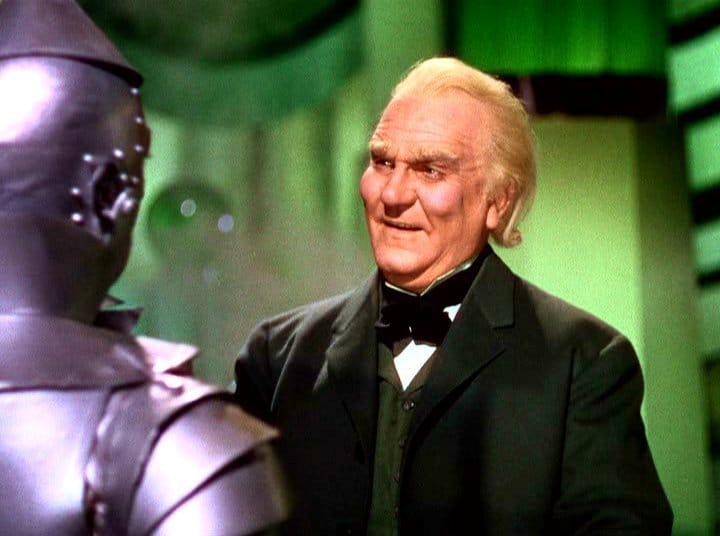
Source: MGM
They eventually found the perfect coat. Morgan later discovered the words “L. Frank Baum” stitched into the inside. As it turns out, the coat had been owned by L. Frank Baum himself! Producers later gifted the coat to the late author’s widow once filming had wrapped up.
20. An Actor Did Not Hang Himself on Set
Out of all the conspiracy theories that seemed to surround this film, one of the most outrageous ones is that a munchkin or disgruntled crew member hung himself on set and that the body could be seen in one scene.
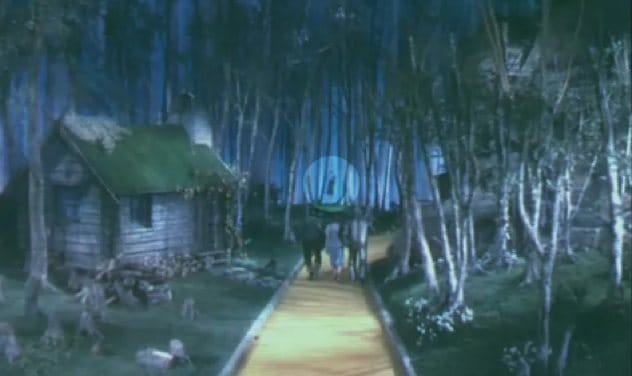
Source: wnuneville/Pinterest
However, the “body” was, in fact, a bird. The studio rented about 400 birds from a local zoo to use in various projects. Some birds had managed to escape from their cages and ended up on the set of The Wizard of Oz. The bird that was visible in the scene was an escaped crane stretching out its wings. It’s definitely not a hanging munchkin!
21. Victor Fleming Was Rumored To Be a Nazi Sympathizer
Victor Fleming had become infamous not just for slapping Judy Garland on set. The Wizard of Oz director, who also directed Gone with the Wind at the same time, was said to be a Nazi sympathizer, according to some people who worked closely with him.

Metro-Goldwyn-Mayer
Actress Anne Revere, who worked with him in The Yearling, once claimed that Fleming was “violently pro-Nazi” and opposed the idea of the United States joining the Second World War. In the biography Victor Fleming: An American Movie Master, author Michael Sragow wrote that Fleming also mocked the UK at the onset of the Second World War, saying that the UK would not survive an attack by the Germans.
22. Why Shirley Temple?
As previously mentioned, the MGM execs’ first choice to play Dorothy was Shirley Temple. They wanted her to play the role so badly, so much so that they were willing to trade Clark Gable and Jean Harlow for Temple, who was signed with 20th Century Fox. So, why did they want Shirley Temple?
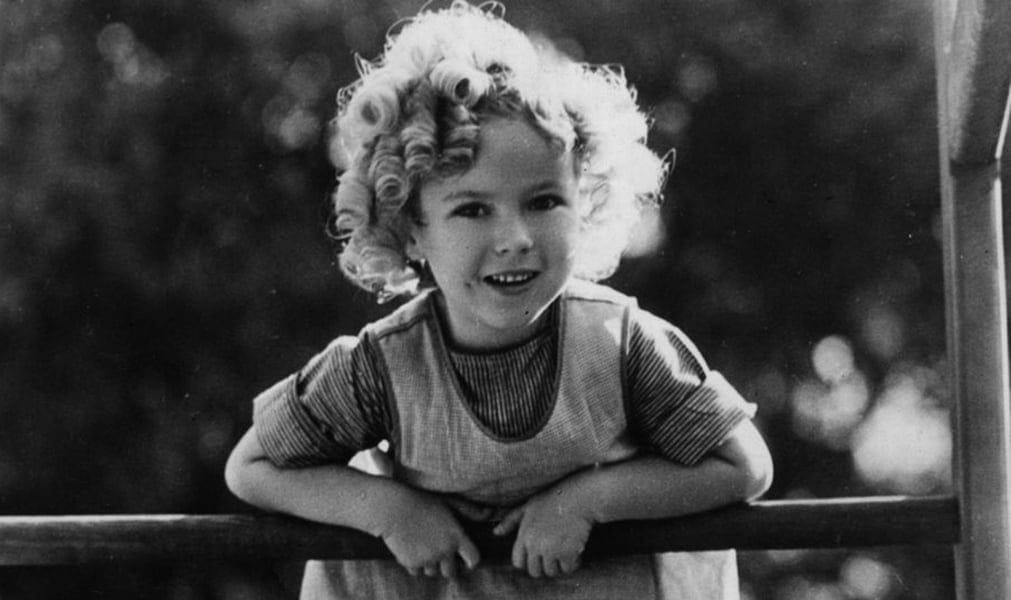
Source: Hulton Archive/Getty Images
Throughout the 1930s, Shirley Temple was America’s sweetheart. She starred in so many classic films, including film adaptations of popular novels. Magazines also published many photos of her off-screen adventures. She also appeared to be a fan of The Wonderful Wizard of Oz, as one photo showed a copy of the book on her shelf. Shirley Temple playing Dorothy seemed like a no-brainer.
23. Arthur Freed Wanted Judy Garland To Play Dorothy
Arthur Freed was a well-known producer and lyricist. He was not credited for his work on The Wizard of Oz, but he did get promoted as the head of his unit at MGM. Freed was later credited for his work on the musical “Babes in Arms” which featured Judy Garland and Mickey Rooney.

Source: lisahd/Pinterest
Even though Louis B. Meyer and the other MGM execs wanted Shirley Temple to play Dorothy, Freed thought that Judy Garland was a better choice for the role. Years later, Shirley Temple would claim in her autobiography that Freed had exposed himself to her when she was 12 while he was trying to get her to join MGM.
24. The Poppy Field Scene Was Controversial
One of the more controversial scenes of the movie is the one where Dorothy and her companions run through a poppy field to get to Emerald City. Halfway through the field, Dorothy, Toto, and the Cowardly Lion lose consciousness. The Wicked Witch had put a spell on the poppies to stop Dorothy.
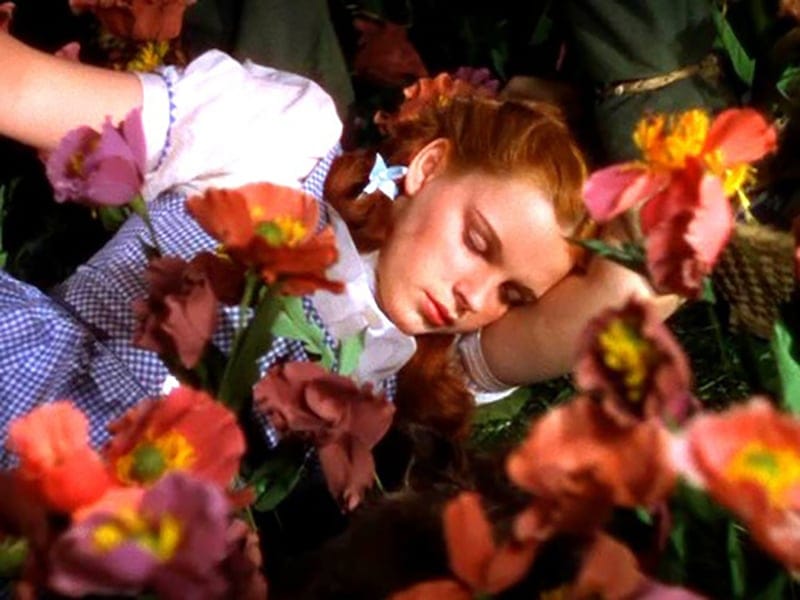
Source: MGM
Some theorists believe that the poppy scene was a reference to how opium – which is derived from poppies – is used to put people into a deep sleep. Garland herself was being given drugs while filming the movie, which makes the scene all the more chilling in retrospect.
25. Dorothy’s Famous Gingham Dress Is Now Worth a Fortune
Aside from the ruby slippers, another iconic item of clothing from the set of The Wizard of Oz is Dorothy’s blue gingham dress. However, there’s more to this dress than meets the eye – it had a hidden pocket where the handkerchief Dorothy uses to wipe away the Cowardly Lion’s tears was kept. It’s also now a highly valuable collector’s item.

Source: MGM & Profiles in History
In 2012, a gingham dress worn by Judy Garland on the set was sold at an auction for nearly half a million dollars. Three years later, another one of the gingham dresses was sold for $1,565,000 at an auction in New York.
26. The Wicked Witch’s Makeup Was Also Toxic
Earlier, we talked about how harmful the makeup used for the Tin Man was for the actors who played the role. The same could be said for the green makeup used for the Wicked Witch of the West.
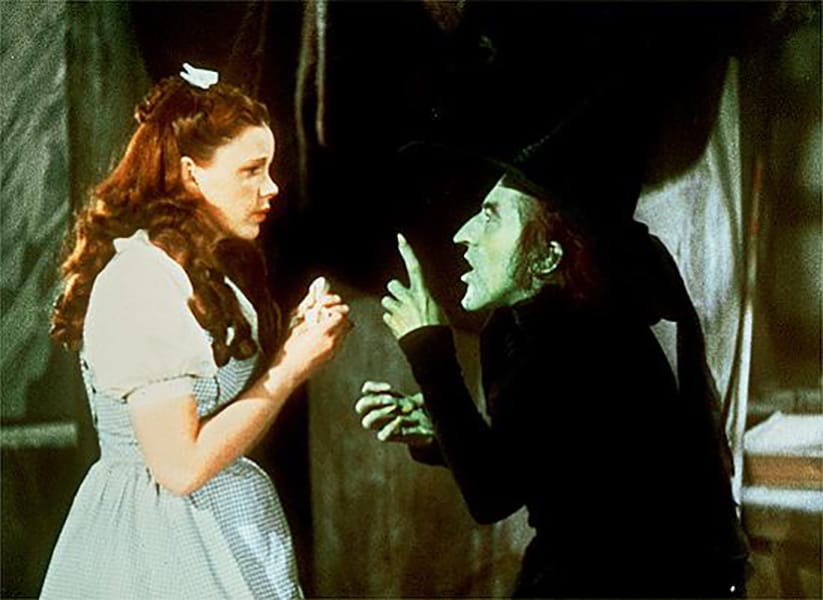
Source: MGM
Margaret Hamilton had reportedly swallowed some of her makeup by accident. She got so sick that she had to go through a liquid diet for several days to remove the harmful substances from her body. The green makeup, with its copper-based ingredients, was also difficult to wash off. Hamilton’s face stayed green for weeks after filming had wrapped up.
27. Terry the Cairn Terrier Also Got Injured During Production
We’ve talked about how the set of The Wizard of Oz was dangerous for many members of the cast, but it wasn’t just the humans that got hurt. Terry, the Cairn Terrier who played Toto, was injured too, at one point.
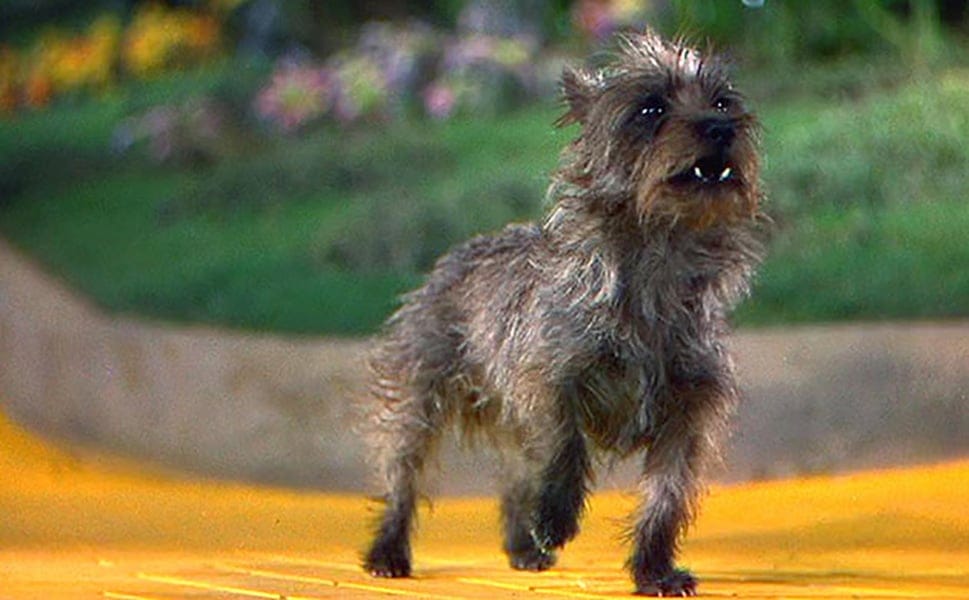
Source: MGM
During production, one of the witch’s guards accidentally stepped on Terry’s foot, leaving her with a broken paw. A second dog had to be hired while Terry’s paw healed, a process that took a couple of weeks. Poor Terry!
28. The Yellow Brick Road Was Difficult to Film in Technicolor
The Yellow Brick Road is one of the most important elements of both the novel and the movie. Dorothy and her companions use the Yellow Brick Road to guide them in their quest to find Emerald City, the capital of the magical land of Oz.
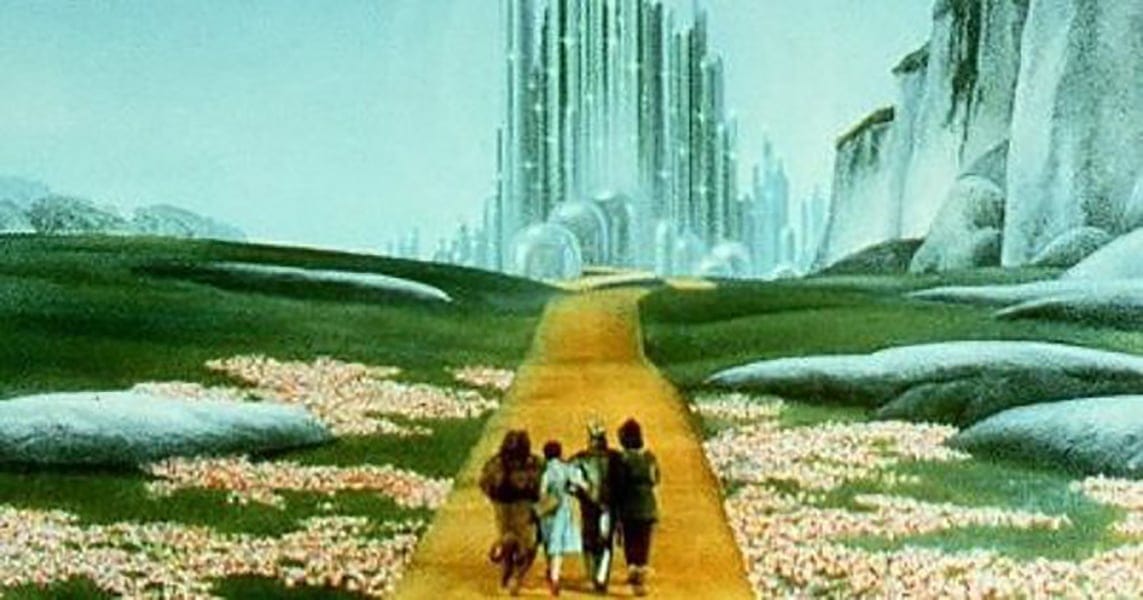
Source: MGM
During filming, the crew realized that the Yellow Brick Road came out green when filmed in Technicolor. To solve this, they decided to play around with industrial-grade paint. It would take several tries before they finally managed to get it right.
29. Asbestos Was Used as Fake Snow
In the film’s infamous poppy field scene, Dorothy wakes up in a poppy field covered in snow engineered by Glinda the Good Witch. However, the snow used was made of 100% industrial-grade chrysotile asbestos, a known health hazard.
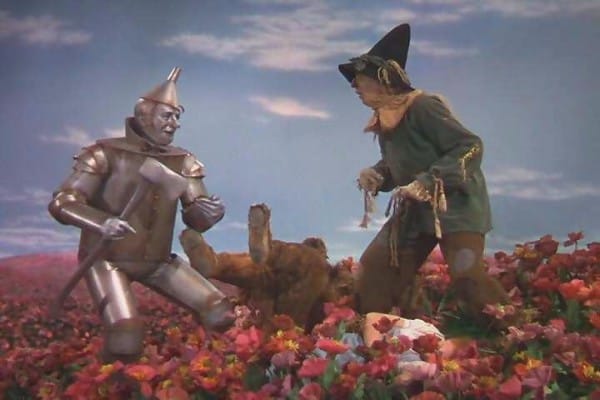
Source: MGM
The harmful effects of asbestos had been documented as far back as 1897 but MGM still decided to use it anyway. Fortunately, there seems to be no evidence that any of the actors were harmed by the substance. We sure hope that the studio has finally learned its lesson!
30. Margaret Hamilton’s Stunt Double Was Also Badly Injured
After recovering from the second and third-degree burns on her hands and face, Margaret Hamilton returned to work. However, she refused to do any stunt work involving fire. MGM then hired Betty Danko as Hamilton’s stunt double. Danko was paid about $11 – $35 a day.
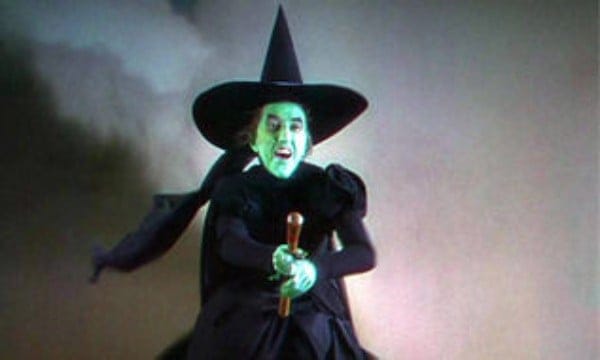
Source: MGM
Unfortunately, Danko herself would get seriously injured during production. While filming the Surrender Dorothy scene, Betty had been sitting on a smoking pipe that was made to look like a broomstick. The pipe exploded, and Danko was hospitalized for two weeks. Her legs were permanently scarred, but she continued to work as a stuntwoman anyway.
31. The Munchkins Wanted To Get Away From the Nazis
Most of the Munchkins in The Wizard of Oz are played by members of the “Singer Midgets,” an entertainment troupe from Europe. However, the group’s name was chosen not for their singing abilities – they were named after their manager, Leopold von Singer. The group performed throughout Europe before eventually settling in the United States.

memegigi/Pinterest
For many of the performers, the trip to the United States was an opportunity to escape from the Nazis, who were beginning to take over parts of Europe at the time. Another interesting fact about the Singer Midgets is that most of them barely spoke English, so professionals were hired to dub their parts.
32. Other Animal Actors Were Also Hired
Numerous animals can be seen throughout the film, besides Toto. For the horses in Emerald City, the crew rubbed Jell-O crystals all over the horses’ bodies to give them their bright color. The crew had to shoot the horses’ scenes as fast as they could before the horses could lick the sugary substance off!
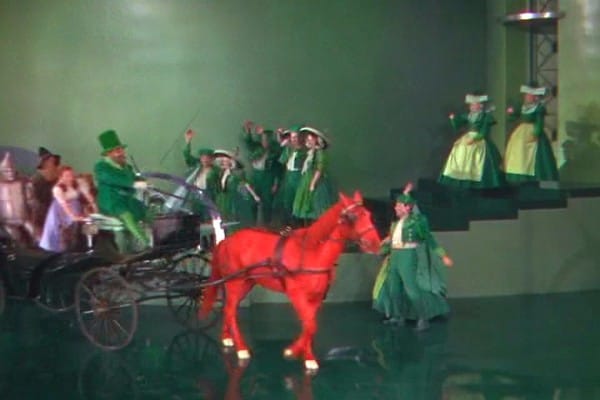
Source: Metro-Goldwyn-Mayer
The winged monkeys, however, were played by humans in monkey costumes. In the movie, the head monkey is named Nikko. Nikko was named after a Japanese town that became known for a shrine where the Hear No Evil, See No Evil, Speak No Evil monkeys originated.
33. Some Special Effects Were Impressive for Their Time
The Wizard of Oz was shot in 1939 when CGI and advanced special effects did not exist. However, some of the special effects used were quite impressive for their time. For those scenes with the winged monkeys, for instance, piano wires were used to keep them hanging in the air. Unfortunately, several actors were injured when the wires snapped while filming one scene.
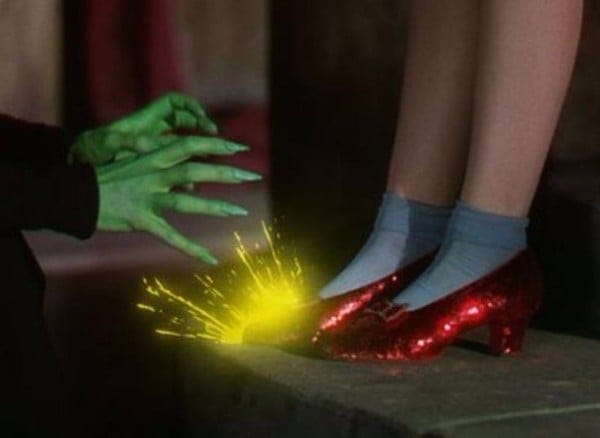
Source: MGM
Also, in the scene in which the Wicked Witch tries to remove the ruby slippers and fire appears around her hands, apple juice was squirted out of the shoes, then they sped up the film. For the tornado scene, many special effects were used. The crew used a miniature house that was dropped behind a sky painting, and the film was reversed to make it seem like Dorothy’s house was falling towards the camera.
34. Filming in Technicolor Wasn’t Always a Smooth-Sailing Process
The Wizard of Oz was one of the first full-length films to be shot in Technicolor, so filming it wasn’t always a smooth-sailing process. Many mistakes were made, and some of them hadn’t been noticed by anyone until after the film’s release.
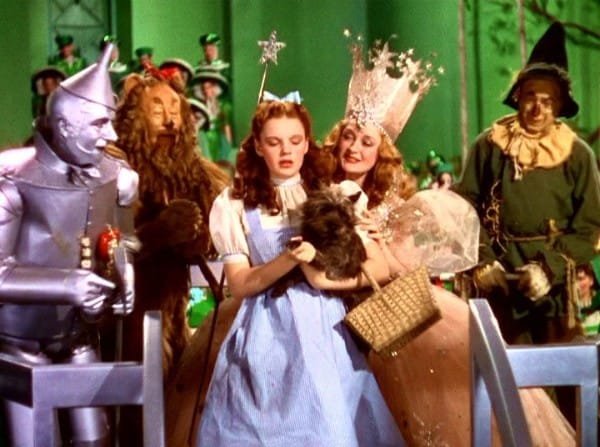
Source: MGM
If you look closely during the “We’re Off to See the Wizard” scene, you can see the shadows of the cameras and spotlights on the grass. The colors of some of the items on set as well as the characters’ costumes had to be tweaked several times to get the color just right.
35. The Wizard of Oz Had Multiple Oscar Nominations
Despite its controversies, The Wizard of Oz remains a classic to this day. The film received widespread acclaim upon release and was nominated for numerous Oscars including Best Cinematography, Best Production Design, Best Visual Effects, and Best Picture and Best Original Music Score, which it won.
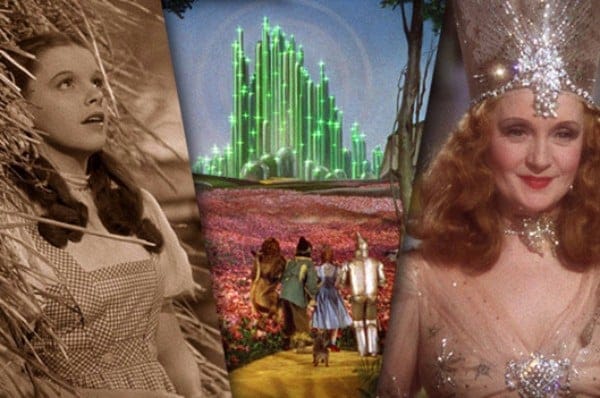
Source: daliciadalicia/Pinterest
Aside from the nominations and awards it received, the United States Library of Congress also recognized The Wizard of Oz as being “culturally significant” to the United States and preserved the film in the National Film Registry. In 2014, Warner Bros. Entertainment released it in IMAX 3D to celebrate its 75th anniversary.
36. L. Frank Baum Was a Women’s Suffrage Advocate
L. Frank Baum wrote The Wonderful Wizard of Oz in 1900. Twenty years before that, Baum was a specialty chicken breeder. Baum’s description of Kansas in his novel is based on his experience living in drought-ridden South Dakota with his wife.
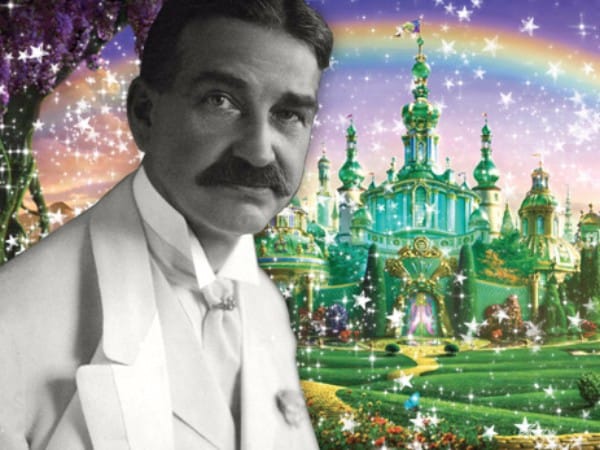
Source: everydayjill/Pinterest
Baum came up with the name “Oz” after looking at his filing cabinet and saw the letters A-N and O-Z. Aside from his famous novel, Baum had also written about other topics throughout his life, including stamp collecting. Baum was also a women’s suffrage advocate and channeled his support for feminism into his Oz books.
37. Frank Morgan Played Five Different Roles
Frank Morgan, played a total of five roles throughout the film. Aside from playing the Wizard, he also played the Kansan professor who could predict the future, the driver of the Horse-of-a-Different-Color at Emerald City, the guard at the Wizard’s palace, and the gatekeeper.
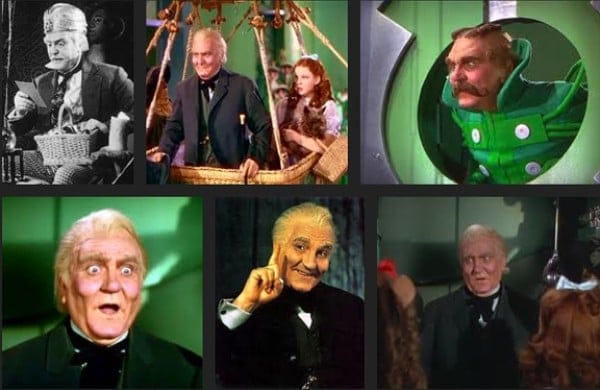
Source: MGM
While it has been speculated that this was done by the studio to save on casting fees, some say that the director was simply being true to the nature of the Wizard, who was a powerful and mysterious figure.
38. The 1939 Film Adaptation of L. Frank Baum’s Novel Was Not the First
The 1939 film adaptation of L. Frank Baum’s novel The Wonderful Wizard of Oz was not the first rendition, though it did become the most famous. Other versions include The Fairylogue and Radio-Plays, a 1908 silent film starring Romola Remus. There was also The Wonderful Wizard of Oz, a 15-minute film released in 1910 that was based on the 1902 stage play.
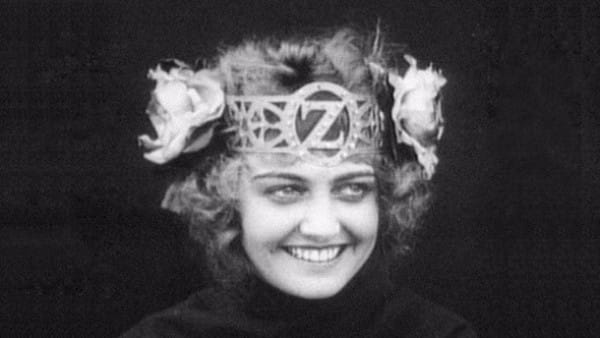
Source: Wikimedia Commons
In 1914, Baum’s motion picture company The Oz Film Manufacturing Company made The Patchwork Girl of Oz, which follows a completely different set of characters, including Ojo, Unc Nuckle, and Patchwork Girl.
39. The Wizard of Oz Flopped at the Box Office
Not that many people know that The Wizard of Oz flopped at the box office. MGM barely managed to earn back its $2.8 million budget for the film. However, it’s also important to remember that the film was released towards the end of the Great Depression, and not that many people could afford to go to the theaters.
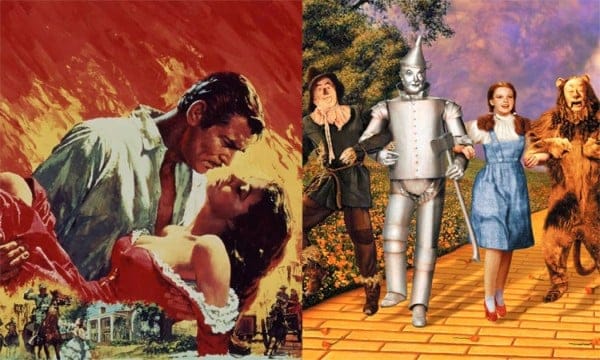
Source: MGM
Despite its poor performance at the box office, The Wizard of Oz was still widely praised and won numerous awards, including two Oscars. However, it wasn’t until 1956 when the film was shown on television that it finally achieved mainstream success.
40. Dorothy Was Named After L. Frank Baum’s Niece
Dorothy Gale, the novel and film’s protagonist, was named after Dorothy Louise Gage, L. Frank Baum’s baby niece. Baum and his wife (whose brother was Baby Dorothy’s father) adored Baby Dorothy, so they were left heartbroken when she died in November of 1898 when she was just five months old.

Source: beckyshickle/Pinterest
Baby Dorothy was buried at Evergreen Memorial Cemetery in Bloomington, Illinois. In 1996, Sally Roesch Wagner, a historian who was researching L. Frank Baum’s mother-in-law, located the grave. Her discovery sparked interest in restoring the gravesite. Mickey Carroll, one of the last surviving Munchkins, worked with the Evergreen Memorial Cemetery to create a new marker. The new marker was unveiled on May 31st, 1997, and the cemetery’s children’s section was renamed the Dorothy L. Gage Memorial Garden.
